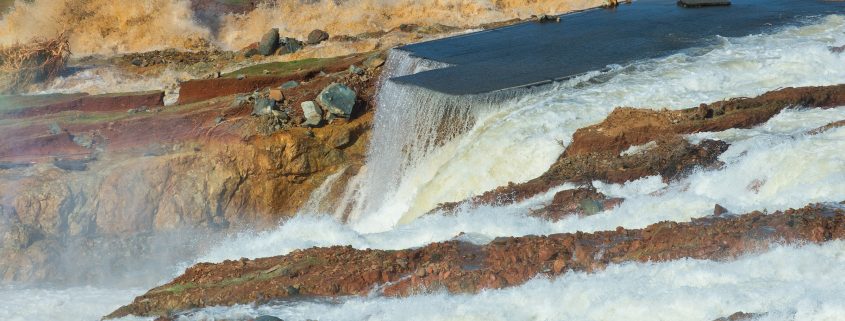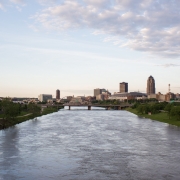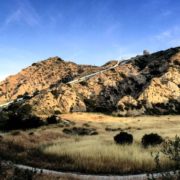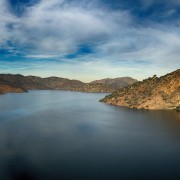Oroville Emergency a Warning for U.S. Dam Safety
California prepares for long battle with Oroville’s damaged spillway.
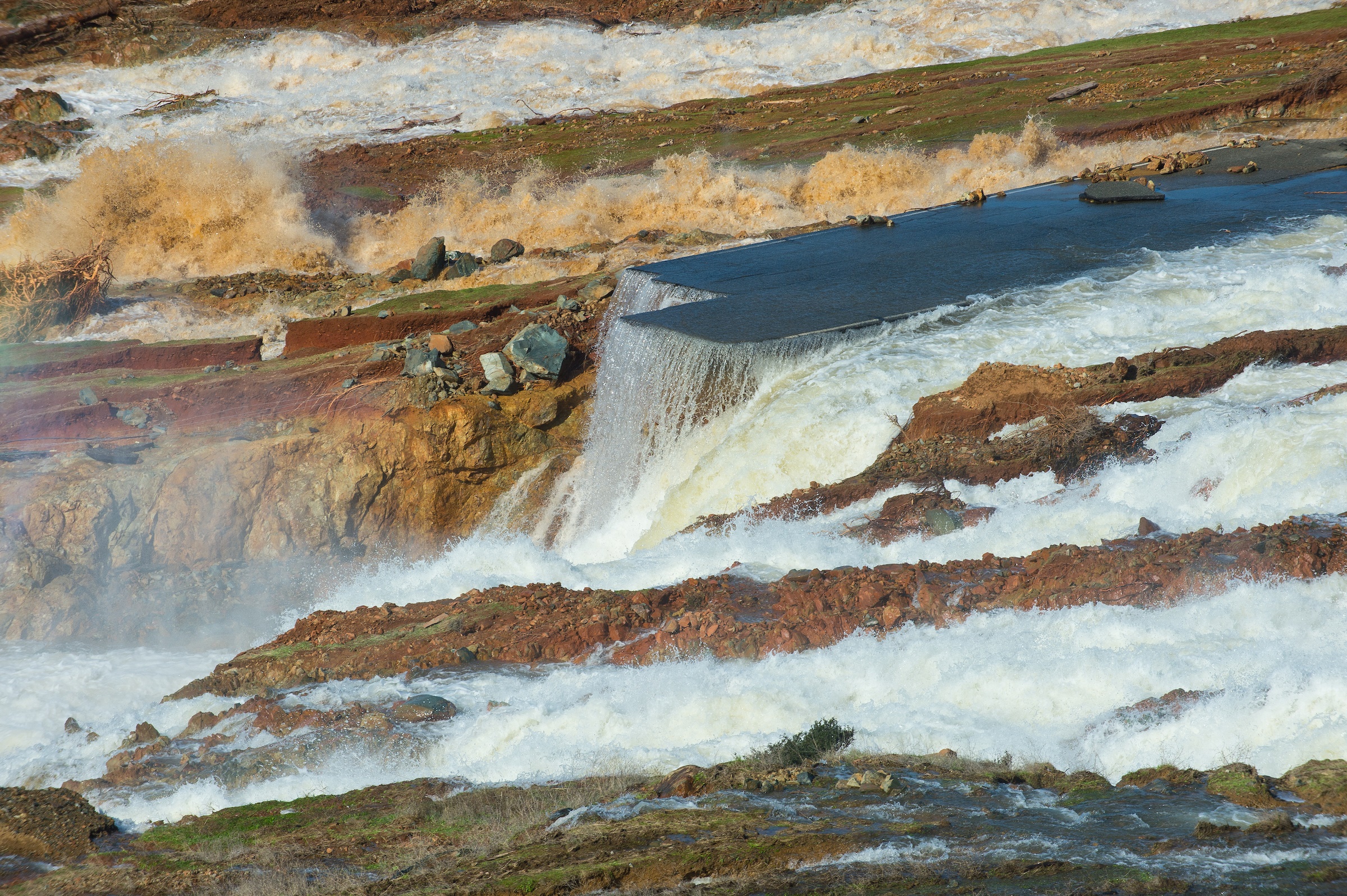
Water from the Oroville Dam auxiliary spillway has eroded the roadway just below the spillway. Photo courtesty of Kelly M. Grow/ California Department of Water Resources
By Brett Walton, Circle of Blue
The near-failure on Sunday evening of the auxiliary spillway at Oroville Dam and the ongoing emergency operations to contain flood waters in California’s second-largest reservoir and shore up its eroding outlet are a tale of caution for the nation’s aging dam fleet.
“I think it should give many people reason to step back and take a hard look at things, including California,” wrote Martin McCann, director of the National Performance of Dams Program at Stanford University, in an email to Circle of Blue.
The Oroville emergency is unfolding in a state with a dam safety program widely regarded as the nation’s strongest. McCann agreed that California’s efforts to prevent a partial collapse of Oroville’s auxiliary spillway should be a wakeup call for other states with less vigilant dam regulation. Alabama, for instance, has no state dam oversight at all.
Already the top spending state for dam safety, both in total dollars and inspectors per dam, California increased its program budget by six percent between 2014 and 2016, to $US 13.3 million. The Department of Water Resources’ Division of Safety of Dams has roughly one employee per 20 state-regulated dams. That is far greater than the national average of one employee per 200 dams, according to data from the Association of State Dam Safety Officials.
“California has had a strong dam safety program for many decades,” McCann said. “It’s well-funded, well-staffed, and they inspect regularly.”
Dam safety experts cite money as the most significant impediment to safer dams. Though California spends big on oversight, the cost of repairs has emerged as a factor in the Oroville emergency. Reporting from the Mercury News revealed that state and federal officials rejected an appeal from three environmental and civic groups in 2006 to line the auxiliary spillway with concrete. The groups were concerned that the topsoil on the hillside spillway would erode if it were ever used. February 11 was the first time that water flowed over the auxiliary spillway since the 770-ft-tall dam was completed in 1968. Use of the auxiliary spillway was necessary because of damage to the main spillway and inflows to the reservoir that nearly matched the flow of the Mississippi River at St. Louis. Officials had to evacuate as much water as quickly as possible.
Most of the more than 90,500 dams in the U.S. Army Corps’ national dam database, however, are not behemoths like Oroville. Most instead resemble Twenty-one Mile Dam, a 47-foot-tall earthen structure in Elko County, Nevada. Owned by Winecup Gamble Ranch, a 948,000-acre livestock operation, the dam burst on February 9 during heavy rain. Flood waters released by the dam chewed through 200 yards of Highway 233, which remains closed.
Two-thirds of U.S. dams are privately owned and often owners do not have funds for maintenance or repair, according to Lori Spragens, executive director of the Association of State Dam Safety Officials. Most U.S. dams are more than 50 years old and an unknown number are not built to current safety standards. The association estimates that $US 18.7 billion is needed to repair high-hazard, state-regulated dams. High-hazard dams could kill people if they failed.
“We’re living off the investments of two to three generations ago,” Eric Halpin, deputy dam safety officer for the U.S. Army Corps of Engineers, told Circle of Blue. “Those dams have the science and engineering of their times embedded in them. The pace of change today doesn’t get easier. It gets harder in the future: back to back wettest years followed by five years of drought. All this has an impact on dams.”
That is the case in California where the record-setting drought that begin in 2013 has abruptly given way to record-setting rains. The northern Sierra Nevada, where Oroville Dam is located, is on track for its wettest year on record.
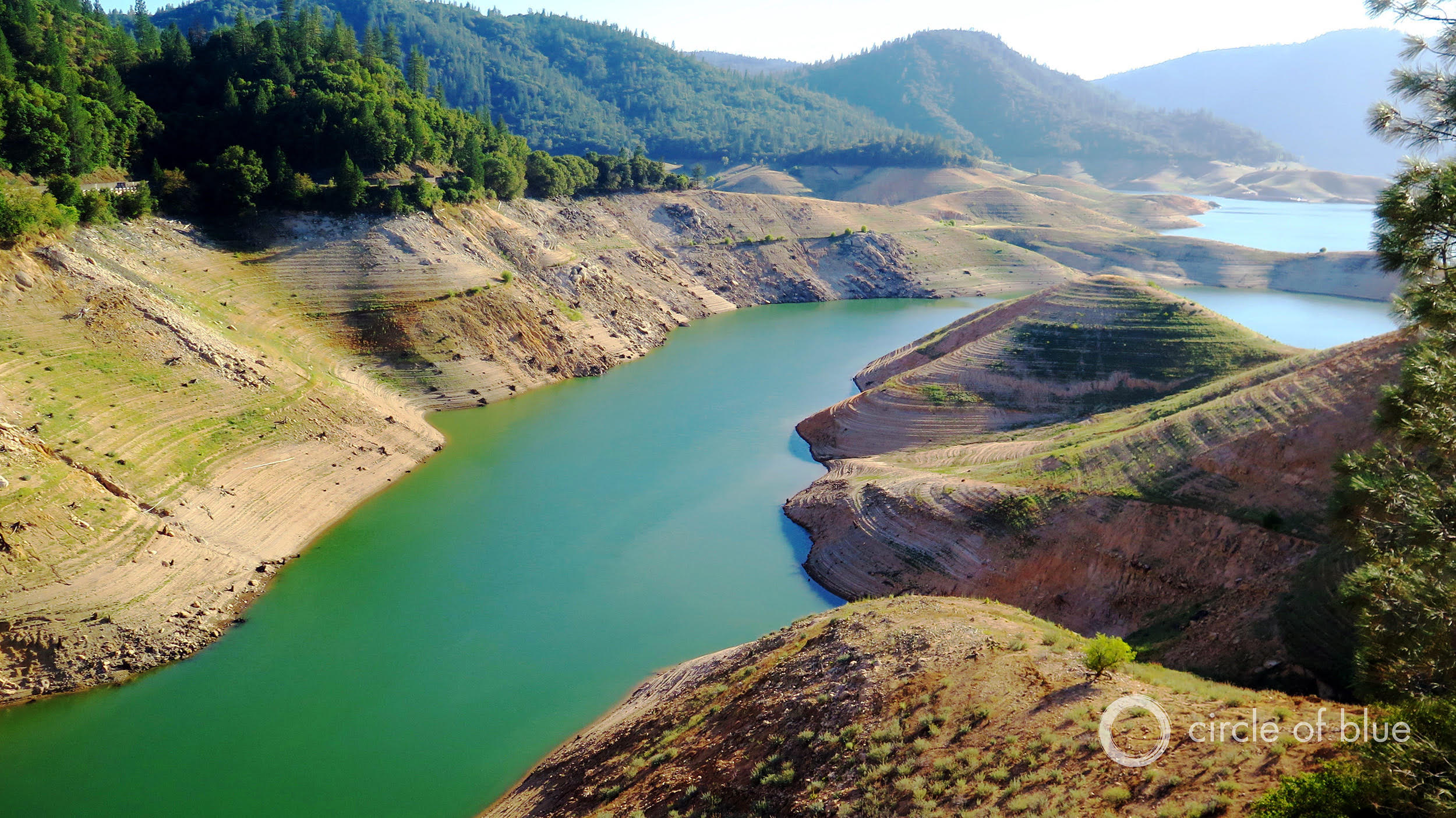
Oroville Reservoir in June 2015, when California was in the middle of a devastating drought. Photo © Keith Schneider / Circle of Blue
The pressure on Oroville will not soon let up. The watershed above the dam is expected to get as much as eight inches of precipitation through February 21. Then in the spring, the massive snowpack, measuring twice the historical average in some spots, will melt. The California Nevada River Forecast Center estimates that water flows in the Feather River, which drains into Oroville, will peak on April 29.
All of which has state officials on constant alert. “We want to complete assessments, do corrective measures on the emergency spillway, and get it ready for potential future use here in the coming weeks or months,” said Bill Croyle, acting director of California Department of Water Resources.
State authorities lifted on Wednesday the mandatory evacuation order for some 188,000 people. Construction crews, meanwhile, are reinforcing the eroded auxiliary spillway with 1,200 tons of rocks and fill per hour.
“Our goal to use infrastructure throughout the wet season,” Croyle said. “We don’t want to put too much water down it at any given time.”
Brett writes about agriculture, energy, infrastructure, and the politics and economics of water in the United States. He also writes the Federal Water Tap, Circle of Blue’s weekly digest of U.S. government water news. He is the winner of two Society of Environmental Journalists reporting awards, one of the top honors in American environmental journalism: first place for explanatory reporting for a series on septic system pollution in the United States(2016) and third place for beat reporting in a small market (2014). He received the Sierra Club’s Distinguished Service Award in 2018. Brett lives in Seattle, where he hikes the mountains and bakes pies. Contact Brett Walton

